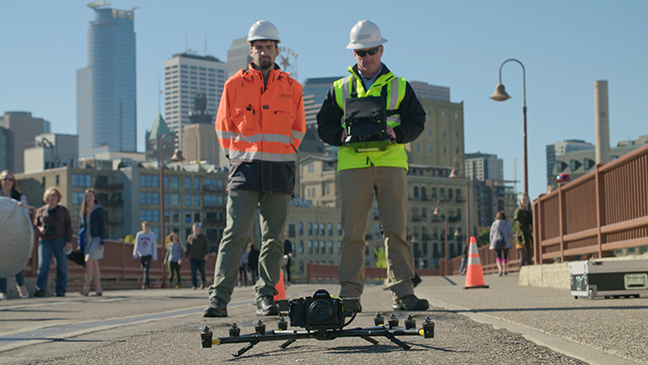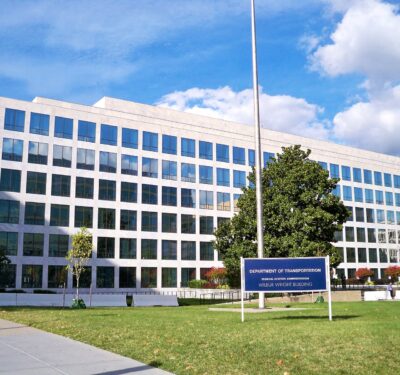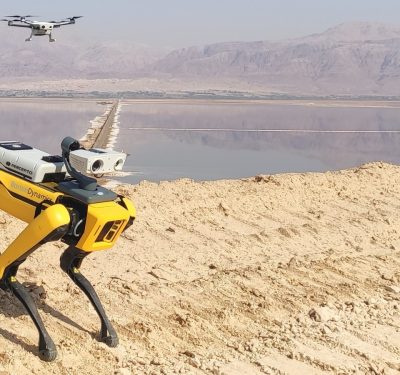Intel recently worked with the Minnesota Department of Transportation (MnDOT) and the Kentucky Transportation Cabinet (KYTC) to more efficiently and safely complete bridge inspections via unmanned aircraft systems (UAS).
The departments used Intel’s drone hardware and software solutions to inspect the Daniel Carter Beard Bridge connecting Ohio and Kentucky and the Stone Arch Bridge in Minnesota, according to a news release.
“With bridges worldwide experiencing undetected structural issues due to inefficient inspection and monitoring processes and unreliable data for rehabilitation, it is critical to address this real-world concern of transportation safety with impactful commercial drone applications,” said Anil Nanduri, Intel vice president and general manager, drone team, according to the release. “Intel’s comprehensive drone solutions not only improve speed and accuracy through increasing automation of existing workflows, but also reduce safety risks and provide engineers and transportation bureaus with more reliable, actionable insights for future planning and safety assessments.”

Using the Intel Falcon 8+ Drone and 36-megapixel Sony A7R payload, Intel, Collins Engineers and the Minnesota Department of Transportation conduct an aerial survey of the Stone Arch Bridge in Minneapolis. Working with the Minnesota Department of Transportation and Collins Engineers, Intel used its commercial drone technology to help automate and expedite inspection the pedestrian and bicycle bridge in Minneapolis. (Credit: Intel Corporation)
The Daniel Carter Beard Bridge is an eight-lane interstate that crosses the Ohio River, with nearly 100,000 vehicles driving across it each day. Lane closures, which are necessary for traditional inspections, can result in long delays. The bridge remained open and fully functional during the drone inspection. The Intel Falcon 8+ captured about 2,500 high-resolution images, generating 22GB of data that was uploaded to the Intel Insight Platform. A 3-D model was created to help with analyses and visualization. The model also can be used to monitor paint deterioration and cable stability over time.
The Stone Arch Bridge is a pedestrian and bicycle bridge in Minneapolis. It’s inspected every year because of the structure’s aging masonry and fractured steel span. With the Intel Falcon 8+, the team was able to reduce work hours by 28 percent. They also realized a cost savings of about 40 percent on the inspection, which could save taxpayers an estimated $160,000 over the next 10 years.
For both inspections, Intel’s solutions assisted officials in the full drone workflow, from flight planning and aerial data capture to cloud-based digital data management, processing and analytics.






